6 December, 2003
Filtering Water Samples
Now that the planes and helos are finally flying,
McMurdo is a little quieter. My friends have departed
to the field or left on outbound flights to
Christchurch. Andy and Colleen finally made it to
their sites and Robin is on her way home. It was so
nice to have been able to spend some Antarctic time
with the other TEA teachers. Starting with our initial
orientation during the summer of 2002, we developed a
special bond which continued through a year and half
of periodic phone calls and e-mails. While we knew a
few of us might run into each other, it was a rare
opportunity that five of us happened to be in town at
the same time. In past years, TEA teachers were much
more scattered. In addition to being stationed out of
McMurdo, some were stationed on icebreakers, Palmer
and the South Pole.
Around town many are still taking it easy as they
fight the “crud”. I’m still hoping I don’t get it. I
could teeter either way so I’m taking lots of vitamins
and making sure I get a good amount of sleep. We’ll
see if the immunities I’ve built up as a result of
being a teacher will pay off down here.
Today I spent part of the day filtering water samples
that were collected at various depths from Lake
Fryxell. Dr. Michael Madigan, who also does research
in the Dry Valleys, gave the samples to Dr. Connell.
We will use some of his samples to study the microbes
that are living in the lake water. Below is a photo
journal describing this process.

1. Past and Present TEA Teachers from left to right: Robin Ellwood, Barb Schulz (TEA ‘96-97 and Antarctic Educational Outreach Experiences: ‘99-00, ’02-03), Me, Colleen Brogenski, Andy Sajor, and Jean Pennycook (TEA’99-00 Antarctic educational coordinator)
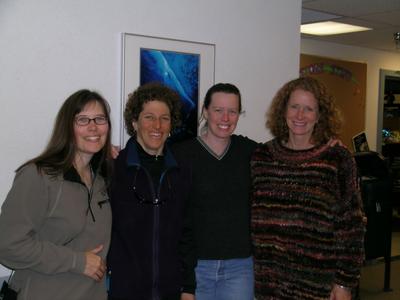
2. TEA photo shoot 2: Me, Susy Ellison, Colleen, and Jean. Missing from both of these picture are Michael Lampert, who flew down on Winfly and returned before most of us even deployed.

3. This is the filter used to filter the water samples. Any idea as to why it is gray in color? How might the grid be helpful?
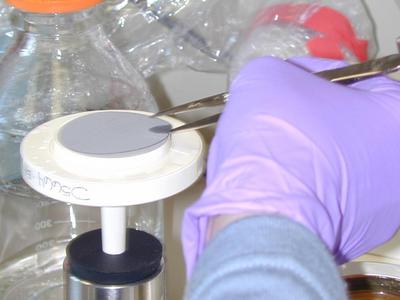
4. Placing the filter on the magnetic filter funnel.
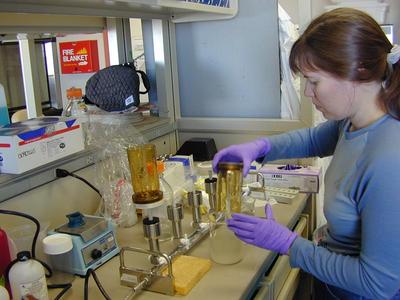
5. Sterilizing the “cups”. First I dip both ends of the cup in ethanol. Next I dip both ends in sterile water. These will then be paced on top of the filter funnel. The magnet on the bottom of the “cup” is attracted to the magnet on the filter funnel. Why isn’t there a bottom to the cup?

6. The lake water is poured into the cup.
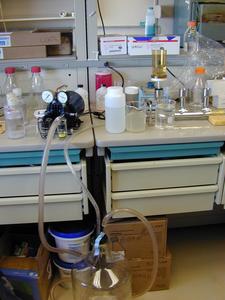
7. A vacuum pump draws the water through the filter and out through a tubing that empties into a collection container.

8. Once a liter of water has passed through the filter, the filter is carefully removed with sterile tweezers and a new filter is added. One filter is placed on a YPD plate and the remaining filters are put in a small bag and stored in the freezer. This process is then repeated with the remaining samples. When switching to a new sample, I must sterilize the 1-liter bottles I used to pour the water into the "cup". Here I am rising the liter bottle with sterile water. Before doing this, I swirled the inside with ethanol.
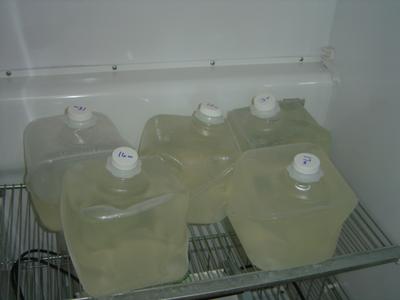
9. Jugs that still need to be filtered. On average, each jug contained four liters of water. How many filters were needed for each sample? If we have 13 jugs of water, how many filters will be required to filter all of the samples?
Contact the TEA in the field at
.
If you cannot connect through your browser, copy the
TEA's e-mail address in the "To:" line of
your favorite e-mail package.
|
